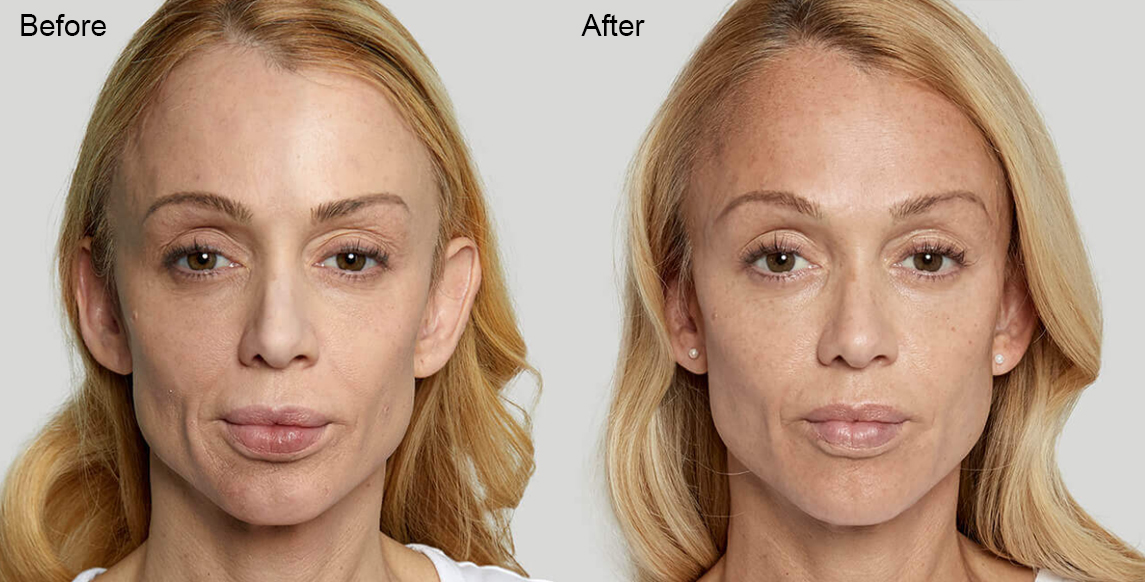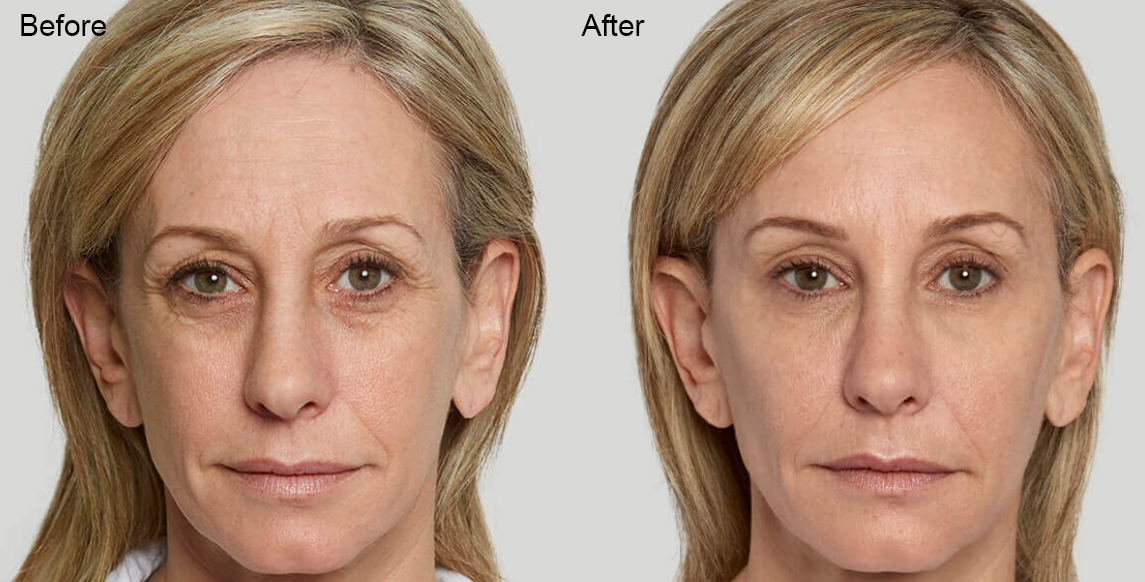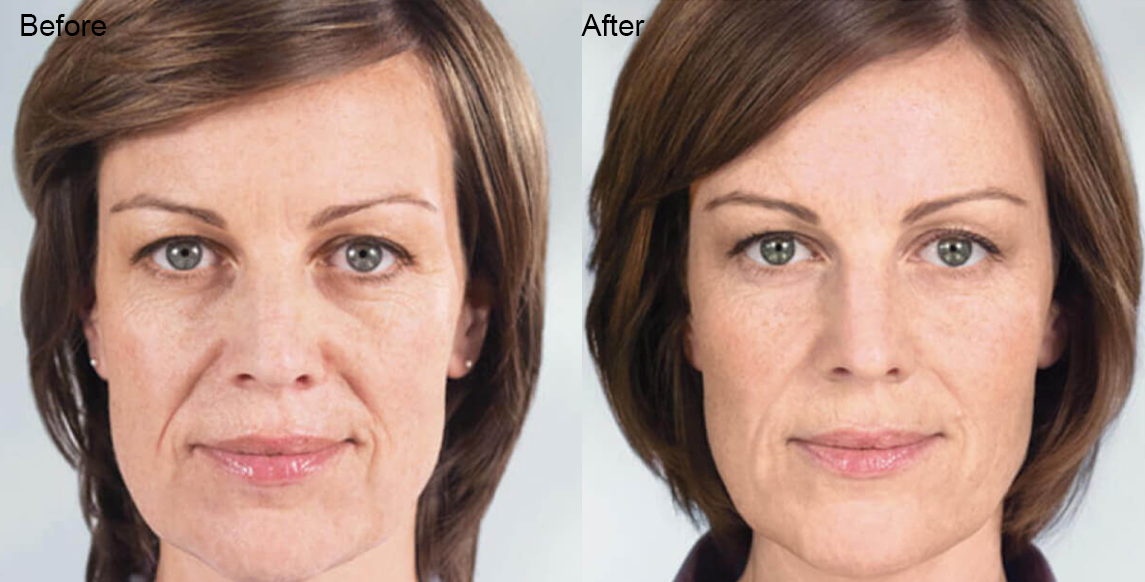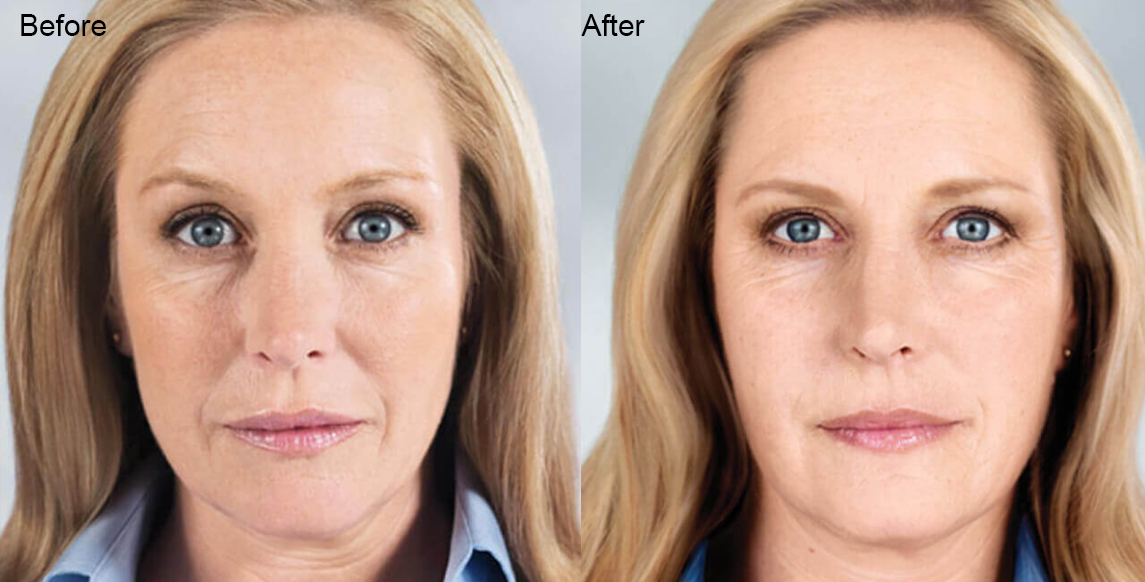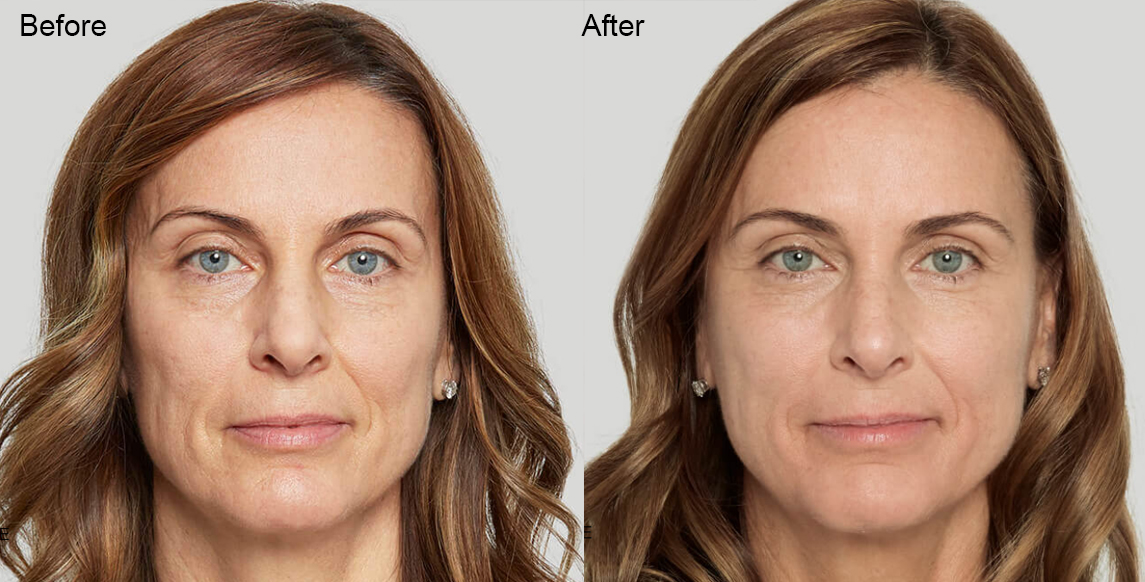
Sculptra 101: A Comprehensive Introduction
What is Sculptra?
Sculptra, a dermal filler, stands out in cosmetic procedures for its unique properties and mechanism of action. Sculptra acts as a collagen stimulator, unlike hyaluronic acid fillers, which fill in depressions. As the body ages, it produces less collagen, leading to volume loss, wrinkles, and changes in skin thickness. Sculptra addresses these signs of aging by enhancing the body’s collagen production.
How Does Sculptra Work?
Sculptra’s key ingredient, poly-L-lactic acid, is a synthetic material that’s biodegradable and naturally absorbed by the body. When injected into the treated areas, Sculptra initiates collagen production, a key structural component responsible for the skin’s elasticity and volume. Over time, the area treated with Sculptra injections exhibits improved fullness and a youthful appearance.


The Science Behind Sculptra
Components of Sculptra
Sculptra Aesthetic is primarily composed of poly-L-lactic acid, a biodegradable substance used safely in various countries for decades. Unlike some dermal fillers that use hyaluronic acid, Sculptra employs this synthetic material, which is safe and compatible with the human body. In certain formulations, lidocaine may also enhance patient comfort during injection.
The Biological Effect of Sculptra
Once administered, Sculptra triggers the body’s natural processes to produce collagen. As a collagen stimulator, it revitalizes the skin’s elasticity and thickness lost due to age. Through the body’s natural process of absorbing the biodegradable Sculptra, the skin slowly regains volume and reduces indentations and fine lines, revealing natural-looking results.
The Use of Sculptra in Aesthetic Medicine
Sculptra for Facial Volumising
Age-induced facial volume loss, particularly in the cheek region and temples, can give the face a sunken appearance. Sculptra treatment sessions target these areas of fat loss, stimulating collagen and gradually restoring facial contours. Over a series of treatments, patients witness a revitalization of their facial volume, turning back the hands of time.
Sculptra for Non-Surgical Facelift
Gone are the days when surgical procedures were the only answer to sagging skin and facial wrinkles. Today, non-invasive options like Sculptra injections offer an alternative. By targeting the treated area or areas, Sculptra promotes collagen production, providing lift and reducing the appearance of sagging, thereby granting a youthful appearance without the risks of traditional facelift procedures.
Sculptra for Skin Rejuvenation
Beyond volume restoration, Sculptra is a beacon for those seeking facial rejuvenation. Factors like sun exposure, environmental factors, and medical conditions can degrade skin tone and texture over the years. Through the Sculptra treatments, skin benefits from enhanced collagen stimulation, reducing facial wrinkles and improving skin tone. This leads to a smoother, fresher appearance, making Sculptra a preferred choice for many seeking to combat signs of aging.
Benefits of Sculptra
The Natural Look of Sculptra
Sculptra is renowned for cosmetic enhancements that offer an undeniably natural look. Sculptra provides gradual improvement, unlike some treatments that deliver sudden and often jarring changes to facial contours or the buttocks. This slow and steady transformation mimics the body’s collagen production, ensuring that the resulting appearance isn’t just beautiful and organic in its feel. Sculptra offers an elegant solution for people who want to avoid the “done” look so common with other treatments.
The Gradual Transformation with Sculptra
The charm of Sculptra lies in its subtlety. Post the initial treatment, patients won’t wake up the next day to a drastically different reflection. Instead, over weeks and months, areas like the cheeks, hip dips, and buttocks undergo a transformation that restores their natural fullness and shape. This systematic change ensures the person remains recognizable, making the enhancement discreet yet undeniably effective.

The Sculptra Procedure
The Sculptra Consultation
Before any injectable treatment, an initial consultation is paramount. This allows both the patient and provider – whether a doctor, nurse injector, or team of plastic surgeons – to discuss the treatment plan, ensuring the procedure aligns with the patient’s aesthetic goals. During this consultation, providers will address questions related to the price, the expected results, and post-procedure care. Based on individual needs and the indications approved by the FDA and Health Canada, the medical professional determines if the person is a good candidate for Sculptra.
The Injection Process
Administering Sculptra requires the safest techniques to ensure optimal results. The provider usually starts by numbing the area with a cream to make the process comfortable. The product is then meticulously injected into the desired area, targeting the soft tissue beneath the skin. This injectable treatment is typically quick, allowing patients to return to normal activities soon after.
Aftercare and Results Following Sculptra Treatments
After the injection, some immediate aftercare is advised to ensure the best possible outcome. Patients are often encouraged to massage the treated areas for a few days to help distribute the product evenly. Over the subsequent weeks, the magic of Sculptra unfolds. The production of collagen gets a boost, gradually bringing about the desired enhancement. This transformation peaks over the next few months, delivering optimal results that can be maintained with a bespoke treatment plan.
Potential Side Effects and Complications of Sculptra
Common Temporary Side Effects
Like all cosmetic procedures, Sculptra is not without its side effects. However, most of these are temporary and resolved without intervention. Patients might experience swelling, redness, or tenderness at the injection site after the injections. Some might also notice slight bruising or bumps. These are common reactions and usually subside within a week.
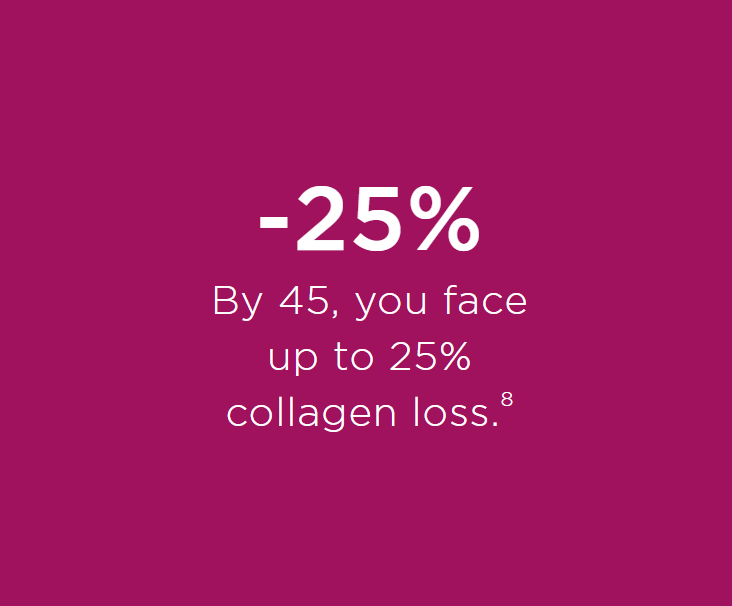
Less Common Complications
While Sculptra boasts a positive track record in clinical studies and is FDA-approved, it’s essential to be aware of rarer complications. In some cases, small nodules might form beneath the skin. These can be palpable, though they’re often not visible. There’s also a minimal risk associated with the injection procedure, like unintentional injection into a blood vessel. It’s crucial to ensure the procedure is carried out by an experienced provider well-versed in the safest techniques.
Comparing Sculptra to Other Filling Agents
The world of aesthetic medicine offers many options to restore youthfulness and enhance facial and bodily contours. Among them, Sculptra has steadily risen in popularity. But how does Sculptra measure up against other filling agents?
Sculptra vs Radiesse
Both Sculptra and Radiesse are biostimulatory fillers that encourage the body’s natural collagen production. However, while Sculptra utilizes poly-L-lactic acid, Radiesse comprises calcium hydroxylapatite (CaHA) microspheres.
- Results: Sculptra offers gradual results over a few months, while Radiesse might show more immediate volume enhancement.
- Longevity: Sculptra results can last up to two years or more. Radiesse, on the other hand, boasts a slightly shorter duration.
- Usage: Sculptra is commonly utilized for enhancing facial volume, combating sagging, and even for a Sculptra butt lift. Radiesse is frequently used for hand rejuvenation and facial contouring.
Sculptra vs. Hyaluronic Acid Fillers
Hyaluronic Acid (HA) fillers like Juvederm and Restylane are famous for plumping lips and filling wrinkles. Comparing Sculptra to HA fillers:
- Composition: Sculptra is a biocompatible synthetic substance, while HA fillers contain hyaluronic acid.
- Results: Sculptra results appear gradually, mimicking natural collagen growth, whereas HA fillers provide immediate volume.
- Reversibility: A significant distinction lies in reversibility. If a patient is unsatisfied with an HA filler, it can be dissolved instantly with an enzyme. Sculptra, however, is not reversible but is gradually metabolized by the body.
Sculptra vs. Fat Transfer
Fat transfer or fat grafting involves extracting a person’s fat, processing it, and re-injecting it into desired areas.
- Procedure: Fat transfer is a surgical process and may require anesthesia. Sculptra is minimally invasive, only involving injections.
- Longevity: Both treatments can offer long-lasting results, though the longevity of fat transfer may vary more between patients.
- Recovery: Sculptra typically has a shorter downtime compared to fat transfer.
Conclusion: Is Sculptra Right For You?
In concluding the discussion on Sculptra, it is important to understand that it stands out in cosmetic enhancements, particularly when comparing Sculptra vs filler options. Sculptra injections are known for their collagen-stimulating properties, providing a gradual and natural-looking improvement. When considering this treatment, one should consider both the pros and cons. On the plus side, it offers long-lasting results by reinforcing the skin’s structure.
However, the cost is a factor to consider, with Sculptra cost in Canada, and more specifically Sculptra Toronto cost, varying based on the extent of treatment required. The procedure involves injecting Sculptra filler into the targeted areas, which can differ from person to person. Those inquiring about how much Sculptra costs should also consider the practitioner’s expertise and the product’s quality, which can affect the overall outcomes in Canada.
Given these points, individuals must seek professional advice to understand where Sculptra is injected and the specific benefits it can offer over other fillers. This comprehensive approach ensures that one’s investment into this treatment—whether in Toronto or elsewhere in Canada—satisfies their aesthetic goals.
Book Your Free Consultation Today Or Call (647) 560-9233
By providing your phone number you agree to receive informational text messages from laserskin.ca. Consent is not a condition of purchase. Message frequency will vary. Msg & data rates may apply. Reply HELP for help or STOP to cancel.
FAQ About Sculptra
What exactly is Sculptra?
Sculptra is a bio-stimulatory dermal filler made of poly-L-lactic acid (PLLA) that helps to gradually restore volume by stimulating the body’s collagen production.
How does Sculptra differ from other dermal fillers?
Unlike hyaluronic acid fillers that provide immediate volume, Sculptra works over time, stimulating the body’s natural collagen production to provide a more gradual and lasting improvement.
Who is an ideal candidate for Sculptra treatments?
People experiencing facial volume loss due to aging or certain medical conditions like HIV, or those who desire enhancement in areas like the buttocks or for treating cellulite, can benefit from Sculptra. However, a consultation with a certified provider is essential.
Are the results from Sculptra immediate?
No, Sculptra results are not immediate. The product works gradually over several treatments to stimulate collagen; optimal results are typically seen a few months after the last treatment session.
How long do the effects of Sculptra last?
The effects of Sculptra can last up to two years or more. Individual factors, such as treatment location, age, skin type, and how the body reacts to the procedure, can influence this variation.
Are there any side effects associated with Sculptra treatments?
Typical side effects encompass reactions at the injection spot, such as inflammation, redness, discomfort, or discoloration. However, these are typically temporary and resolve on their own.
Can Sculptra be used for body contouring?
Yes, Sculptra is gaining popularity for uses beyond the face, such as enhancing the buttocks (often called the “Sculptra butt lift”) and treating cellulite.
How many Sculptra sessions are typically needed?
The number of sessions varies depending on the treatment goals and the treatment area. On average, patients need two to three sessions spaced a few weeks apart.
What should one expect during a Sculptra consultation?
In a Sculptra consultation, the practitioner will examine the patient’s skin, discuss the treatment’s objectives, address any inquiries, and tailor a specific plan to meet the anticipated results.
How much does Sculptra cost?
The Sculptra cost can vary based on geographic location, the expertise of the practitioner, and the number of vials required for the desired outcome. Generally, it may range from a few hundred to a couple thousand dollars per session. It’s essential to consult with clinics and professionals in your area to get an accurate estimate.
Is Sculptra safe?
Sculptra has been extensively studied in clinical trials and has received FDA approval for cosmetic indications and HIV-related facial lipoatrophy. However, like all medical treatments, Sculptra carries some risks. Common side effects include swelling, bruising, or redness at the injection site. Rarer complications, like the formation of small nodules, can occur. It’s always best to ensure the procedure is administered by a licensed professional and to be informed about potential side effects. Before undergoing treatment, discuss any medical conditions, like a history of skin sores or other skin-related issues, with your provider.

